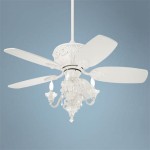The Cost of Repairing a Drywall Ceiling: A Comprehensive Guide
Drywall ceilings, a ubiquitous feature in modern homes and commercial buildings, offer a smooth, paintable surface and contribute to sound and temperature insulation. However, they are susceptible to damage from a variety of sources, including water leaks, impact, and age-related wear and tear. Understanding the factors influencing the cost of drywall ceiling repair is crucial for budgeting purposes and making informed decisions regarding necessary repairs. This article will delve into the various elements that contribute to the overall expense, providing a comprehensive guide to navigating this common home improvement project.
The cost of repairing a drywall ceiling is rarely a fixed figure. It fluctuates based on several key components, making it essential to assess the specific situation before seeking estimates. These factors include the size and severity of the damage, the type of repair required, the materials used, and the labor costs prevalent in the geographic location. Moreover, the presence of complicating factors, such as asbestos or hidden structural issues, can significantly impact the final price.
Key Point 1: Factors Influencing Drywall Ceiling Repair Costs
Several interconnected elements dictate the ultimate price of repairing a drywall ceiling. Addressing each of these components will provide a clearer understanding of the financial implications involved.
One of the most significant factors is the extent of the damage. Small cracks or nail pops are relatively inexpensive to fix, often requiring only patching and painting. However, larger holes, water-damaged areas, or sagging sections necessitate more extensive work, potentially including replacing entire drywall sheets. Water damage, in particular, can lead to mold growth, which requires professional remediation before any drywall repair can commence. This remediation process adds significantly to the overall cost.
The type of repair required also plays a crucial role. A simple patch, involving applying joint compound (mud) and sanding it smooth, is less labor-intensive than replacing large sections of damaged drywall. Texturing the repaired area to match the existing ceiling texture adds another layer of complexity and cost. Matching textures, especially older or more complex textures, can be challenging and may necessitate the expertise of a skilled drywall contractor. Some textures are no longer readily available, requiring custom blending or alternative solutions.
The cost of materials is a relatively smaller factor compared to labor, but it still contributes to the overall expense. Drywall sheets, joint compound, tape, primer, paint, and any necessary fasteners all add to the material cost. The quality of materials used can also affect the price. For instance, using higher-quality paint with better coverage may reduce the number of coats required, potentially saving on labor costs in the long run. Consider also fire-rated drywall for areas requiring it by code.
The labor costs associated with drywall ceiling repair are typically the most significant expense. Labor rates vary depending on the contractor's experience, the complexity of the job, and the geographical location. Highly skilled and experienced contractors often charge higher rates but can ensure a higher quality of workmanship. Obtaining multiple quotes from different contractors is crucial to ensure a competitive price. Requesting detailed estimates that break down the cost of materials and labor allows for a better comparison of different offers.
Finally, location affects cost. Urban areas generally have higher labor rates compared to rural areas. In addition, building codes and regulations can influence the scope of work required, thereby affecting the overall cost. Obtaining necessary permits adds to the expense, but it ensures that the work is compliant with local regulations and protects against potential future issues.
Key Point 2: Types of Drywall Ceiling Damage and Associated Repair Costs
Different types of damage necessitate different repair approaches, each impacting the associated cost. Identifying the nature of the damage is the first step in determining the likely expense.
Small cracks and nail pops are among the most common types of drywall ceiling damage. They are often caused by normal house settling or temperature fluctuations. Repairing these imperfections involves applying joint compound to fill the cracks or nail holes, sanding the area smooth, and repainting. The cost for this type of repair is typically minimal, ranging from a few dollars for a DIY repair to a few hundred dollars if hiring a professional.
Water damage is a more serious issue. Leaks from roofs, plumbing, or even condensation can saturate the drywall, leading to discoloration, sagging, and eventually mold growth. Repairing water-damaged drywall requires identifying and fixing the source of the leak first. The damaged drywall must then be removed and replaced with new material. The cost of water damage repair can vary significantly depending on the extent of the damage and the presence of mold. It can range from a few hundred dollars for a small area to several thousand dollars for extensive damage requiring mold remediation.
Holes in the drywall can be caused by impact, such as furniture bumping into the ceiling or accidental damage during repairs. The repair cost depends on the size of the hole. Small holes can be patched using a self-adhesive drywall patch or by applying joint compound and tape. Larger holes may require cutting out the damaged section and inserting a new piece of drywall. The cost for hole repair typically ranges from a few hundred dollars for a small hole to several hundred dollars for a larger one.
Sagging drywall indicates a more significant problem, often related to water damage or structural issues. Sagging drywall poses a safety hazard and requires immediate attention. The repair typically involves removing the sagging section, addressing the underlying cause (such as a leak or structural problem), and installing new drywall. The cost of repairing sagging drywall can be substantial, potentially reaching several thousand dollars, depending on the complexity of the issue.
Textured ceiling repairs present a unique challenge, as matching the existing texture is essential for a seamless repair. Different textures, such as popcorn, orange peel, or knockdown, require different techniques and materials. Matching the texture can be time-consuming and may require the skills of an experienced contractor. The cost of repairing textured ceilings is generally higher than repairing smooth ceilings due to the added complexity.
Key Point 3: Professional vs. DIY Drywall Ceiling Repair
Deciding whether to hire a professional contractor or attempt a DIY repair is a critical decision. While DIY repairs can save money, they also require specific skills and knowledge. Assessing one's capabilities and the complexity of the repair is essential before making a decision.
DIY drywall ceiling repair is a viable option for minor damage, such as small cracks or nail pops. These repairs typically require basic tools, such as a putty knife, sanding block, and paint supplies. Online resources and tutorials can provide guidance on the proper techniques. However, DIY repairs can be time-consuming, and achieving a professional-looking finish requires practice and attention to detail. Mistakes can be costly, potentially leading to more extensive repairs. Furthermore, safety concerns should be paramount, particularly when working on ceilings requiring the use of ladders.
Hiring a professional contractor is recommended for more complex repairs, such as water damage, large holes, or sagging drywall. Licensed and insured contractors possess the necessary skills, experience, and equipment to perform the work safely and efficiently. They can also identify and address underlying issues that may be contributing to the damage. While hiring a professional incurs higher labor costs, it can ensure a higher quality of workmanship and minimize the risk of future problems. It is important to check the contractor's references and ensure they have proper insurance coverage.
The decision between DIY and professional repair should also consider the time commitment required. DIY repairs can take several days or even weeks to complete, depending on the individual's schedule and skill level. Professional contractors can typically complete repairs in a much shorter timeframe. If time is a constraint, hiring a professional may be the more practical option.
Ultimately, the most cost-effective approach depends on the specific circumstances of the repair. For minor damage that can be easily addressed with basic tools and skills, a DIY repair may be sufficient. However, for more complex or extensive damage, hiring a professional contractor is often the best investment, ensuring a safe, high-quality, and long-lasting repair.

How Much Does Ceiling Repair Cost Forbes Home

How Much Does Ceiling Repair Cost In 2024 Checkatrade

Fixr Com Cost To Repair Drywall S

2024 Drywall Repair Cost Holes S Ceiling Costs

How Much Does Ceiling Repair Cost 2024 Data Angi

How Much Does Ceiling Repair Cost In 2024 Checkatrade

Drywall Ceiling Cost To Install Or Replace 2024 Update

2024 Ceiling Drywall Repair Cost Options Pros Cons Remodeling Calculator

Cost Of Ceiling Repair A Guide All Dry Usa

The Patch Boys Why Owning A Drywall Repair Franchise Is Wise Choice
Related Posts








